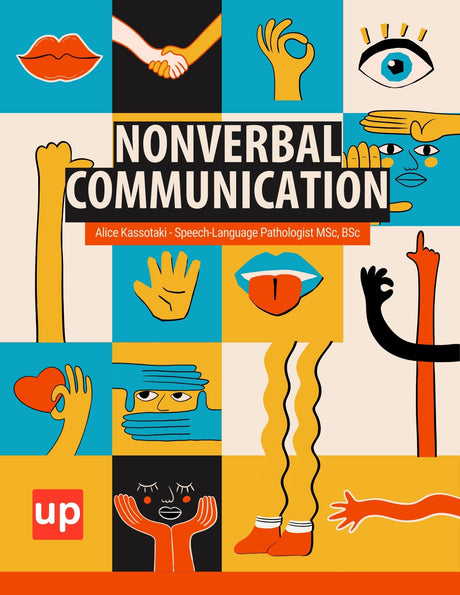Effective communication is the cornerstone of learning, social connection, and personal autonomy. For parents and therapists supporting children, particularly those with autism, understanding the fundamental components of language is critical. In Applied Behavior Analysis (ABA) therapy, communication is often broken down into two core, yet distinct, domains: receptive language and expressive language. While they work in tandem, they represent different cognitive processes—understanding versus producing. Grasping this distinction is not just academic; it is the key to unlocking targeted, effective interventions that foster meaningful language development and empower children to connect with their world.
Key Points
- Receptive and expressive language form the foundation of communication—understanding and producing language respectively—and are both essential for meaningful interaction and learning.
- In Applied Behavior Analysis (ABA), distinguishing between receptive (“input”) and expressive (“output”) skills allows for precise, individualized language interventions.
- The Verbal Behavior (VB) framework organizes these skills into functions such as listener responding, manding, tacting, and intraverbals, creating a roadmap for building comprehensive communication.
Introduction: Unlocking Effective Communication in ABA

Receptive language is the 'input' of communication (understanding), while expressive language is the 'output' (conveying information).
Communication is a two-way street involving both receiving and sending information. In the context of language development and ABA therapy, these two functions are known as receptive and expressive language. Receptive language is the ability to understand information, while expressive language is the ability to convey it. For children, a delay in one area often impacts the other, highlighting their interconnected nature. This article will explore the core differences between these two vital aspects of communication, how they are addressed within ABA, and why understanding them is crucial for parents and therapists aiming to build robust language skills.
Understanding Receptive Language: The Art of Comprehension
Receptive language is the "input" side of communication. It involves the ability to process and comprehend language that is heard or read. Before a child can use words, they must first understand them. This foundational skill allows individuals to make sense of their environment, follow instructions, and engage in social interactions.
Defining Receptive Language Skills
At its core, receptive language is comprehension. It is a child's ability to listen and understand what is being communicated to them. This goes beyond simply hearing words; it involves assigning meaning to them. Key receptive skills include identifying objects and pictures when named, responding to one's name, following directions, and understanding questions.
Core Components of Receptive Language:
- Following Instructions: Responding to commands ranging from simple one-step directions ("Get the ball") to complex, multi-step sequences ("Put your shoes in the closet and wash your hands").
- Answering Questions: Comprehending "wh-" questions (who, what, where, when, why) and responding appropriately.
- Identifying Objects and Pictures: Pointing to or selecting an item from a group when it is named.
- Understanding Concepts: Grasping ideas like spatial relationships (in, on, under), quantity (more, less), and attributes (big, small, red).
The Crucial Role of Receptive Language in Learning and Social Interactions
Strong receptive language skills are essential for academic and social success. In a classroom, a child needs to understand a teacher's instructions to participate in activities. During play, they must comprehend the rules of a game or the suggestions of a peer. Deficits in receptive language can lead to misunderstandings, frustration, and challenging behavior, as the child may not understand what is expected of them.
Receptive Vocabulary Development: Building a Foundation of Understanding
A child’s receptive vocabulary—the number of words they understand—is typically larger than their expressive vocabulary. This foundation is built by consistently pairing spoken words with corresponding objects, actions, and visuals. The more words a child understands, the richer their comprehension of the world becomes, setting the stage for more complex learning and communication.
Understanding Expressive Language: The Power of Expression

If receptive language is input, expressive language is the "output." It is how we use words, gestures, signs, or symbols to communicate our wants, needs, thoughts, and feelings to others. It is the active production of communication.
Defining Expressive Language Skills
Expressive language skills encompass all the ways an individual conveys a message. This can be verbal, through spoken words and sentences, or non-verbal, using gestures, facial expressions, pointing, or an augmentative and alternative communication (AAC) device. It is the ability to make needs known and share experiences.
Core Components of Expressive Language:
- Labeling: Naming objects, people, and actions in the environment.
- Requesting: Asking for desired items or activities (e.g., "I want juice").
- Answering Questions: Using words or signs to respond to inquiries.
- Sentence Formation: Combining words into grammatically appropriate phrases and sentences to convey more complex ideas.
- Using Gestures and Signs: Employing non-verbal communication like waving, pointing, or using sign language.
The Importance of Expressive Language for Autonomy and Social Connection
Expressive language empowers children. It allows them to advocate for themselves, refuse things they don't want, and express affection. The ability to share thoughts and engage in back-and-forth conversation is fundamental to forming friendships and participating in social interactions. Without functional expressive skills, a child’s needs may go unmet, leading to frustration and isolation.
The Core Cognitive Differences: Why This Distinction is Vital in ABA
Understanding the separation between receptive and expressive language is critical because they involve different cognitive and neurological processes. This distinction directly informs the strategies used in ABA therapy to build communication skills effectively.
Processing Input vs. Generating Output: A Cognitive Divide
Receptive language involves decoding and processing incoming auditory and visual information. It is a receptive, interpretive task. Expressive language requires retrieving vocabulary and grammatical rules from memory and then coordinating the motor skills (of the mouth or hands) to produce a coherent message. It is a generative, productive task. A child might easily be able to point to a cookie when asked (receptive) but struggle to say the word "cookie" when they want one (expressive).
The Brain's Role: Different Neural Pathways for Understanding vs. Producing
Neurologically, language comprehension (receptive) is largely associated with Wernicke's area in the brain, while language production (expressive) is linked to Broca's area. Although these regions work together, they have distinct functions. An impairment in one area does not automatically mean an impairment in the other, which explains why some children demonstrate a significant gap between what they understand and what they can say.
Impact on Learning and Teaching Strategies
This cognitive and neurological divide means that teaching methods must be tailored. Teaching a child to follow a direction is fundamentally different from teaching them to make a request. Receptive goals might focus on discrimination tasks (e.g., choosing the correct picture), while expressive goals focus on prompting and reinforcing verbal or signed attempts.
How Understanding These Differences Guides Effective ABA Therapy
ABA therapists use this distinction to conduct precise assessments and develop targeted interventions. If an assessment reveals strong receptive skills but weak expressive skills, the therapy will prioritize programs that encourage initiation and verbal production. Conversely, if a child struggles with comprehension, the focus will be on building their listener skills and receptive vocabulary first.
The Verbal Behavior (VB) Model: Differentiating Receptive and Expressive Language

Within ABA, the Verbal Behavior (VB) approach, based on the work of B.F. Skinner, provides a functional framework for understanding and teaching language. It classifies language based on its purpose, which clearly delineates between receptive and expressive functions.
Listener Responding: The Receptive Operant
Listener responding is the VB term for receptive language. It describes how a person responds non-verbally to the verbal behavior of another. When a therapist says, "Clap your hands," and the child claps, that is listener responding. It is a direct measure of comprehension.
Manding (Requesting): A Key Expressive Operant
The mand is often the first expressive skill taught in ABA therapy because it is motivated by the child’s own wants and needs. A mand is a request (e.g., saying "water" because they are thirsty). It directly benefits the speaker, making it powerfully reinforcing and a cornerstone of functional communication.
Tacting (Labeling): Connecting Expressive Language to the Environment
A tact is a label or comment about something in the environment. Seeing a dog and saying "dog" is a tact. Unlike a mand, a tact is motivated by social reinforcement (e.g., praise or acknowledgement). Tacting builds a child's vocabulary and ability to share their experience of the world.
Intraverbals: Building Expressive Conversational Skills
Intraverbals are conversational responses. Answering "I'm fine" when asked "How are you?" or saying "moo" when someone says "A cow says..." are intraverbals. This expressive skill is essential for social interactions and is dependent on a strong foundation of both receptive and other expressive skills.
Echoics (Imitation): Foundational for Expressive Speech Development
The echoic is vocal imitation. When a therapist says "ball" and the child repeats "ball," this is an echoic. This skill is crucial for teaching new words and shaping clearer articulation, forming a bridge to more complex expressive language.
How VB Highlights the Interdependence of Receptive and Expressive Skills
The VB model shows how these skills are connected. A child must first understand the word "ball" (listener responding) before they can learn to label it (tact) or request it (mand). Progress in one area supports growth in others, creating a comprehensive language curriculum.
Assessment: Pinpointing Language Strengths and Needs
Before therapy begins, a thorough assessment is conducted to pinpoint a child’s specific strengths and deficits across both receptive and expressive domains. Therapists use tools like the Verbal Behavior Milestones Assessment and Placement Program (VB-MAPP) to get a detailed picture of a child’s abilities. This data-driven approach ensures that intervention is precisely targeted to the individual’s needs, determining whether to prioritize comprehension, requesting, labeling, or conversational skills.
Strategies for Nurturing Receptive Language Skills in ABA

ABA employs structured and naturalistic strategies to build comprehension. The goal is to make learning clear, successful, and motivating.
Creating an Optimal Learning Environment: The Role of the Environment
A well-structured environment minimizes distractions and highlights learning materials. Therapists ensure that objects being taught are easily accessible and that instructions are given clearly and concisely, setting the child up for success.
Discrete Trial Training (DTT) for Receptive Skills:
DTT is a structured teaching method that breaks skills down into small, manageable steps. For receptive identification, a therapist might place three picture cards on a table and give the instruction, "Point to the apple." Correct responses are immediately reinforced.
Natural Environment Teaching (NET) and Incidental Teaching:
NET involves teaching skills within the child's natural environment and daily routines. A parent might ask their child to "get your cup" during snack time, using a real-world context to teach comprehension.
Visual Supports: Enhancing Receptive Understanding
For many children, especially those with autism, visuals can significantly aid comprehension. Using picture schedules, choice boards, or gestures alongside spoken words provides an additional layer of information that helps clarify verbal instructions.
Prompting and Errorless Teaching: Guiding Understanding
When teaching a new receptive skill, therapists often use errorless teaching, where they provide a prompt (e.g., gently guiding the child’s hand) to ensure a correct response. This builds confidence and pairs the instruction with a successful outcome, fading the prompt as the child’s understanding grows.
Conclusion
The distinction between receptive and expressive language is fundamental to any effective communication therapy. Receptive language provides the foundation of understanding, while expressive language gives children the power to interact with their world, make their needs known, and build meaningful relationships. Applied Behavior Analysis, particularly through the lens of Verbal Behavior, offers a precise and powerful framework for assessing and targeting these distinct yet interconnected skills. By using tailored strategies like DTT, NET, and visual supports, parents and therapists can work together to systematically build both comprehension and expression. The ultimate goal is not just to teach words, but to empower children with the comprehensive communication skills they need to learn, grow, and thrive in every aspect of their lives.
Frequently Asked Questions (FAQ)
What is the difference between receptive and expressive language?
Receptive language involves understanding words, instructions, and concepts, while expressive language refers to communicating wants, needs, and ideas through words, gestures, or other methods. Receptive skills develop first and lay the groundwork for expressive communication.
Why is this distinction important in ABA therapy?
Because receptive and expressive language rely on different cognitive and neurological processes, ABA therapists tailor interventions accordingly. For instance, a child who understands instructions but struggles to speak requires a different teaching strategy than one who struggles to comprehend language.
How does ABA therapy target receptive language?
ABA builds receptive skills through structured and naturalistic teaching. Techniques include following instructions, identifying objects, and understanding questions, often taught using Discrete Trial Training (DTT) or Natural Environment Teaching (NET).
How does ABA therapy develop expressive language?
Expressive language is taught by encouraging children to use words or gestures to label (tact), request (mand), or respond conversationally (intraverbal). Reinforcement, prompting, and modeling help shape clear, functional communication.
What is the Verbal Behavior (VB) approach in ABA?
The VB approach, based on B.F. Skinner’s work, categorizes language according to its purpose. It distinguishes between receptive functions (listener responding) and expressive functions such as mands (requests), tacts (labels), and intraverbals (conversation).
How do receptive and expressive skills interact?
They are deeply interconnected. A child must understand a word (receptive) before they can use it appropriately (expressive). Progress in one domain often supports growth in the other, which is why ABA targets both simultaneously.
What strategies can parents use at home?
Parents can pair words with actions and visuals, give simple directions, and label everyday objects to strengthen comprehension. Encouraging children to use words or gestures to request items or describe actions supports expressive growth.
What tools do therapists use to assess communication skills?
ABA professionals use assessments such as the VB-MAPP (Verbal Behavior Milestones Assessment and Placement Program) to evaluate strengths and deficits in receptive and expressive language. These results guide individualized therapy plans.
Original content from the Upbility writing team. Reproducing this article, in whole or in part, without credit to the publisher is prohibited.
References
- Skinner, B. F. (1957). Verbal Behavior. Appleton-Century-Crofts.
- Sundberg, M. L. (2008). VB-MAPP: Verbal Behavior Milestones Assessment and Placement Program. AVB Press.
- American Speech-Language-Hearing Association (ASHA). (n.d.). Receptive and Expressive Language.
- Cooper, J. O., Heron, T. E., & Heward, W. L. (2020). Applied Behavior Analysis (3rd ed.). Pearson.
- Leaf, R., & McEachin, J. (2016). A Work in Progress: Behavior Management Strategies and a Curriculum for Intensive Behavioral Treatment of Autism. DRL Books.









